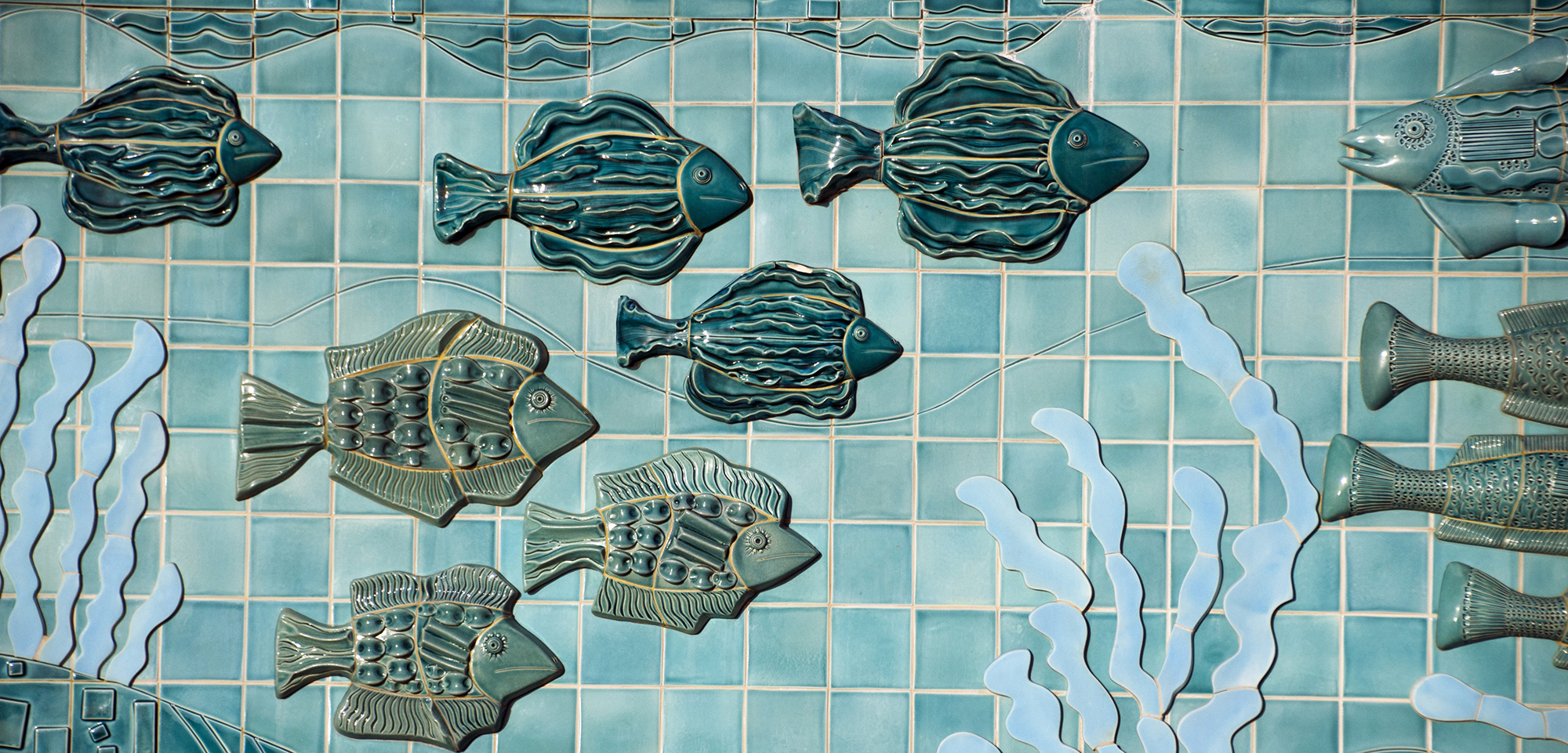Was Pottery Invented to Process Fish?
Wherever researchers look, the advent of pottery always seems connected to fish.
Article body copy
It’s springtime on McCormick Island, Pennsylvania, 3,000 years ago, and the hunter-gatherer groups have amassed a glut of fish. Invigorated by the warm breeze, and joined by new friends from far-flung bands, the men and women work to boil and mash the slippery catch. They skim the oil from atop the brew, carefully pouring the precious fluid into a new contraption: a ceramic pot. The vessel can be placed on an open flame to further heat and refine the fish oil. There will be celebrations and feasting tonight, and the rare pottery will lend the scene a sense of occasion.
At least, that’s the narrative archaeologists are putting together about the invention of pottery in northeastern North America. “Although nobody really knows, of course,” says archaeologist Oliver Craig of the imagined scene.
Around the world, pottery was independently invented in various societies. For a long time, archaeologists thought ceramic vessels were generic receptacles, used for holding all sorts of goods. But new research suggests that instead of being multipurpose, pottery may have been developed for one specific use: to process fish.
While much has been made of pottery designs and markings, the science of deducing what ceramic vessels once held is much younger.
The impetus for pottery’s invention has been a matter of debate among archaeologists. Early hypotheses centered on the advent of agriculture, with pottery being used to store surplus crops. Then ceramic vessels were found to predate farming in North America, and the focus shifted to how pottery could have enhanced productivity for hunter-gatherers. Some archaeologists suggested they could have been used to process inedible seeds and nuts.
Early pottery expert Karine Taché recently spent three months visiting museums and universities across northeastern North America collecting pieces of pottery from more than 130 vessels, all dating from the earliest use of pottery in the region—more than 3,000 years ago. Analyzing the shards, Taché and Craig noticed that while many perishable vessels were used by hunter-gatherers in northeastern North America, evidence of pottery remained sparse even generations after its first invention. On top of that, recovered ceramic vessels are often relatively small, with openings ranging from 10 to 35 centimeters and volumes from 4 to 25 liters. Such small vessels don’t square with the idea that the pottery was used to store large surplus harvests.
At the University of York in England, Taché and Craig drilled into the broken pottery shards to analyze the chemical traces of food that had been absorbed and preserved in the pores of the ceramic.
They found that the vast majority contained some kind of fish, even when the pots had been found alongside a wide variety of other foods. Only seven vessels did not contain detectible aquatic traces. The results line up with similar tests conducted on some of the earliest pottery from around the world. Wherever they look—Japan, northern Europe, the Baltic—archaeologists find that pottery seems to be, at least at first, associated with aquatic foods.
Taché and Craig’s chemical tests don’t say which parts of the fish were placed in the North American pots, or even what kind of fish. But Taché has a few guesses: “Among the fish species found at these sites, the fat content of the American eel, the channel catfish, and the yellow sturgeon make them good candidates for fish oil production.” The oil is less perishable than the whole fish, and could be kept as a soup ingredient or valuable trade item.
Taché and Craig believe that early pottery sites were seasonal meeting points for hunter-gatherer groups, drawing communities together and promoting the cooperative harvesting of fish during periods of high abundance.
“It’s quite cool to think that these different groups have come up with the same solution. You would have thought there would be some kind of connection,” says Craig. “They’ve not only invented pottery. What they’ve really invented is a fish processor. That is, to them, what pottery is.”

